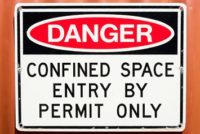Safety is a process, and as such, needs to be managed. This section offers resources to create a viable safety program, sell it to senior management, train supervisors and employees in using it, and then track and report your progress. Look also for ways to advance your own skills in these areas, both for your current job, and those that follow.
The American Society of Safety Professionals (ASSP) kicked off its annual Safety 2018 Conference and Exposition in San Antonio, Texas, by unveiling its new name. Formerly known as the American Society of Safety Engineers (ASSE), the organization elected to change its name to reflect the growing diversity of safety professionals, which now extends to many […]
Employers in the construction, manufacturing, food and beverage, and agricultural sectors, among many others, are well aware of the barriers that language differences present to communicating accurate and complete safety information to workers. Signs that use icons instead of language can, to a limited degree, help get critical information across. Another method is film.
Firefighters—whether they are working in burning buildings or burning forests—can experience a dangerous condition called rhabdomyolysis or rhabdo. Rhabdo is the breakdown of damaged muscle tissue that releases proteins and electrolytes into the blood. These substances can damage the heart and kidneys and cause permanent disability and even death. The condition can occur for many […]
The National Safety Council (NSC) is applauding building owners in Chicago for agreeing to light their properties green in observance of June as National Safety Month.
OSHA and several safety stakeholder organizations recently signed an alliance with North Dakota employers and employees to reduce exposure to trenching and excavation-related hazards.
The impact of safety training on your overall cultural efforts is enormous. But how can you implement training that will engage your employees, and what common mistakes must you avoid? The EHS Daily Advisor gets some tips from Thomas E. (Ted) Boyce, Ph.D., a learning expert and a speaker at the upcoming Safety Culture 2018 […]
Three years ago this month, OSHA issued a new standard for construction work in confined spaces; the standard became effective August 3, 2015. The rule was similar in many respects to the general industry confined spaces standard while also incorporating construction-specific hazards. One issue employers regularly confront under the construction standard is the difference between […]
Wearables are a hot topic in workplace safety, but there is some skepticism among EHS professionals. To get a first-hand look at a solution that is making waves in the market today, the EHS Daily Advisor talked with Timothy A. Risser, co-founder of the Opal System brand of wearables.
Almost every EHS professional knows about risk assessment. But have you considered its impact on the overall health of your safety culture? Today we’re taking a look at how culture and risk assessment overlap in a Q&A with Gary Higbee, President and CEO of Higbee & Associates, Inc.
If you’re an EHS professional, your organization’s safety culture must be a major focus—but a strong culture can be tricky to build. Sure, it’s easy to say that you want a safety culture built on inspiration, not fear, and that the goal is for employee engagement in safety to be positively pursued, not mandated. But […]










